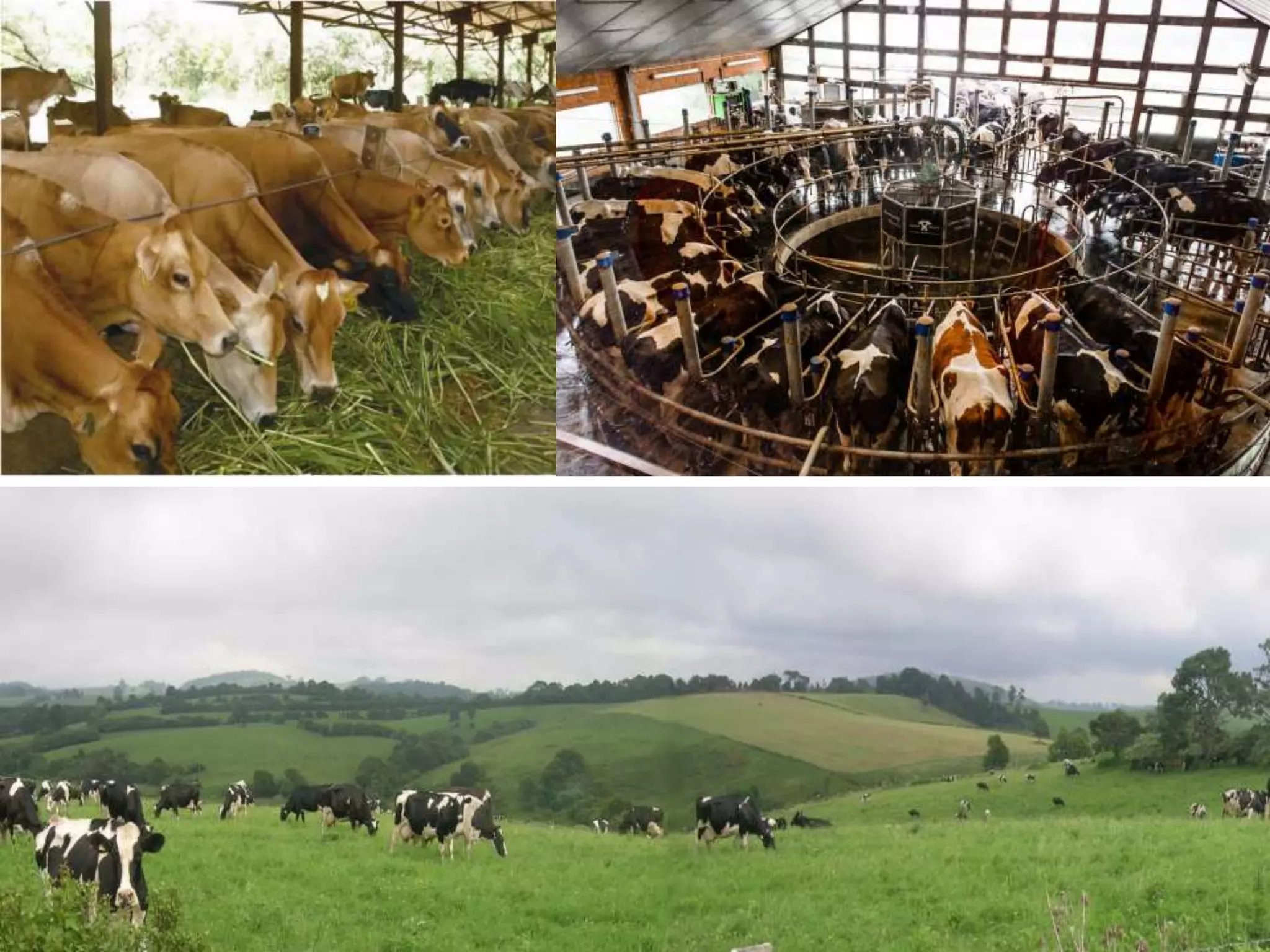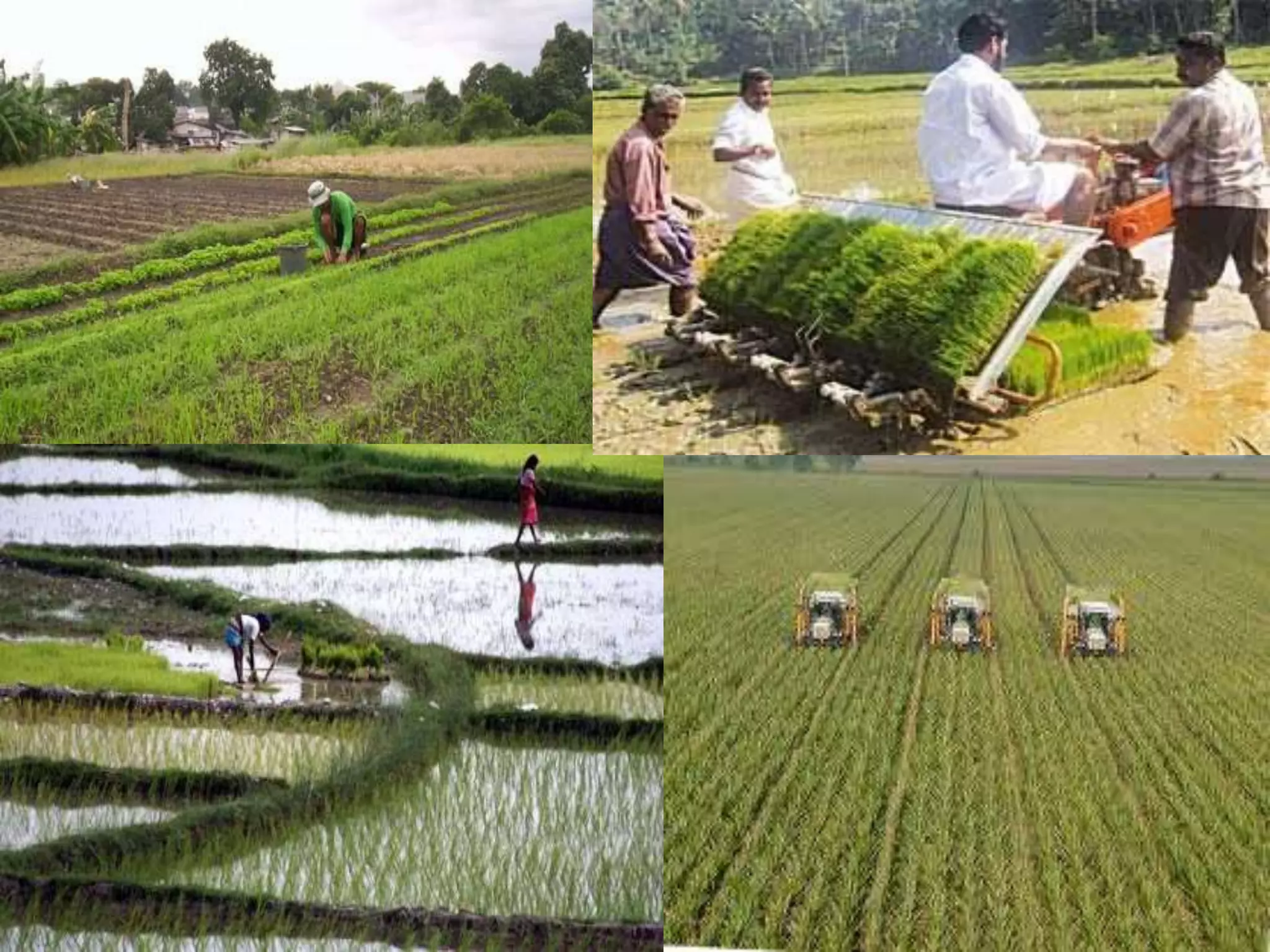The document discusses different types of agricultural activities. It classifies activities into three sectors: primary, secondary, and tertiary. Primary activities include extraction of natural resources like agriculture, fishing, and mining. Secondary activities involve manufacturing goods from natural resources, such as steel production. Tertiary activities provide support services to the other sectors, including transportation, trade, banking, and advertising. The document then focuses on defining and providing examples of agriculture, the different types of farming (subsistence, commercial, plantation), and major crops grown around the world like rice, wheat, cotton, coffee, and tea.



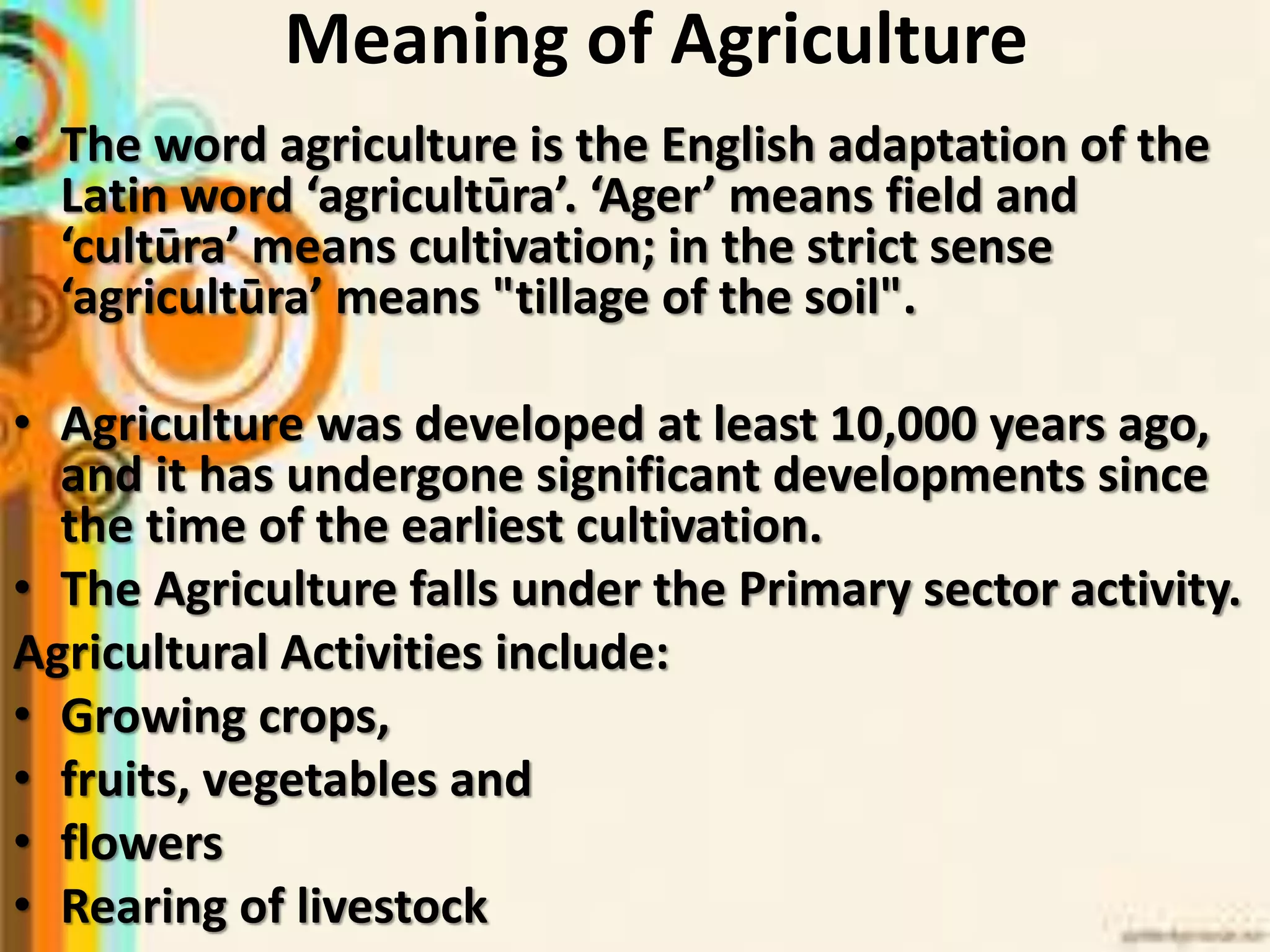




















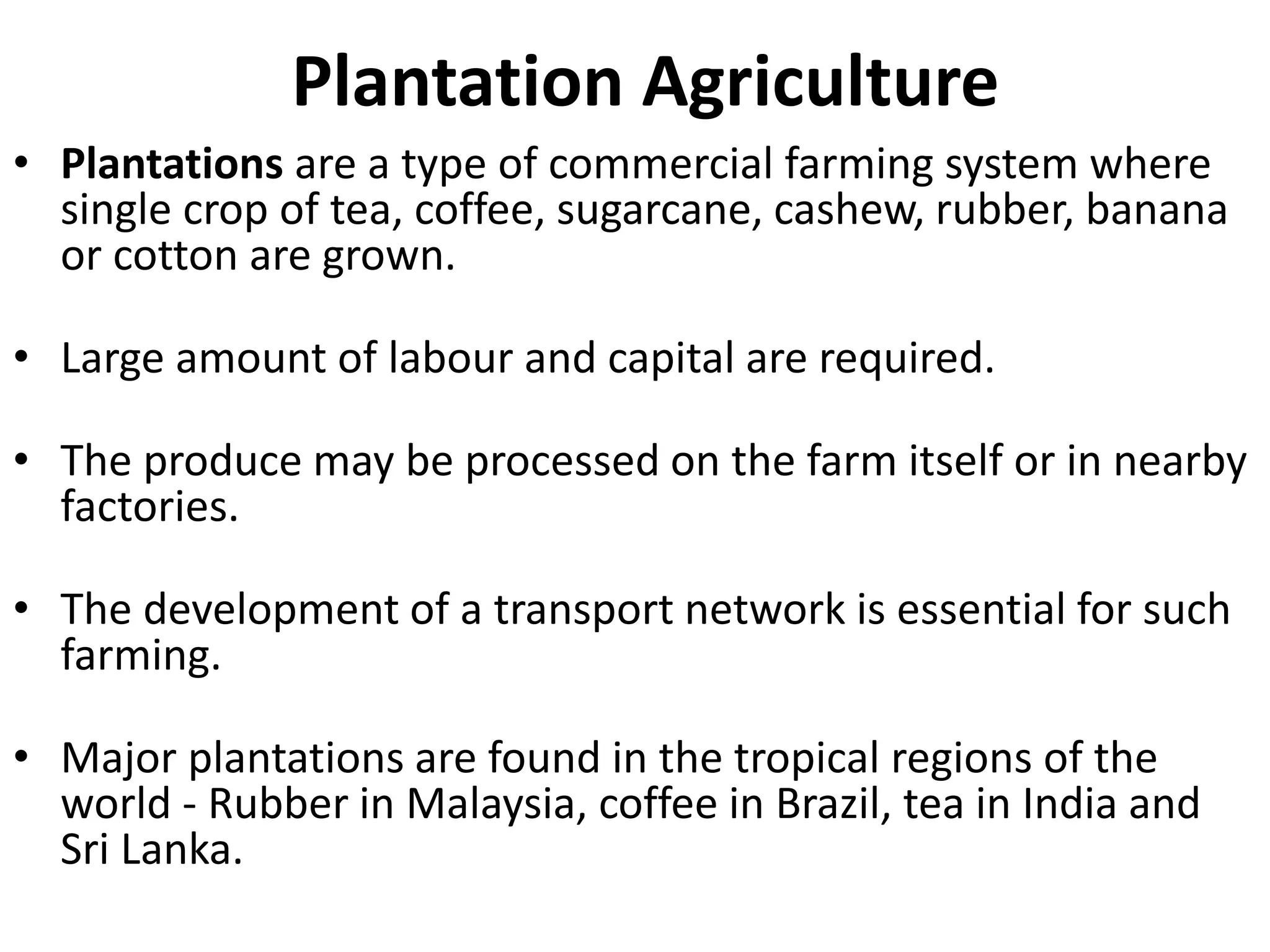

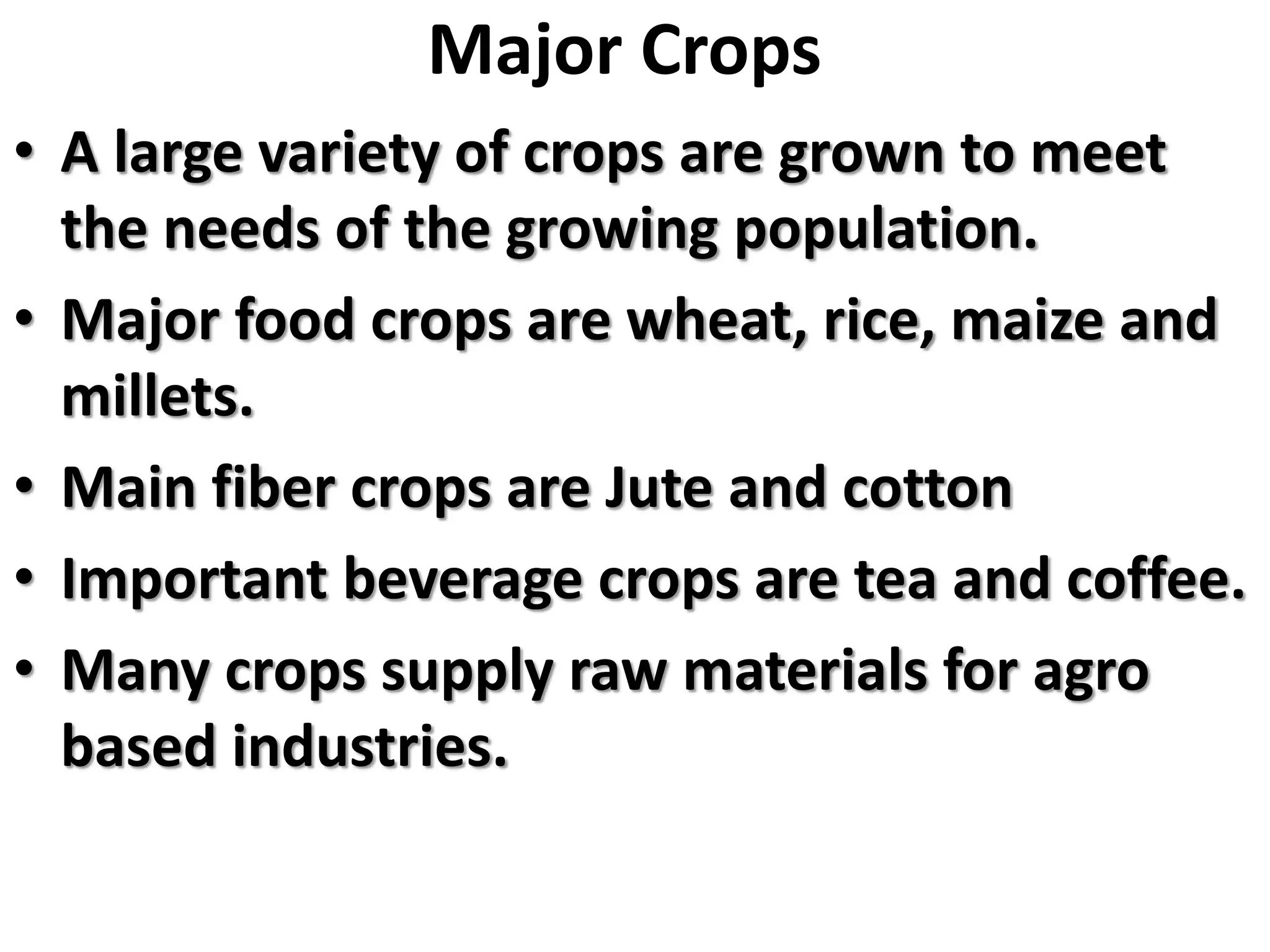
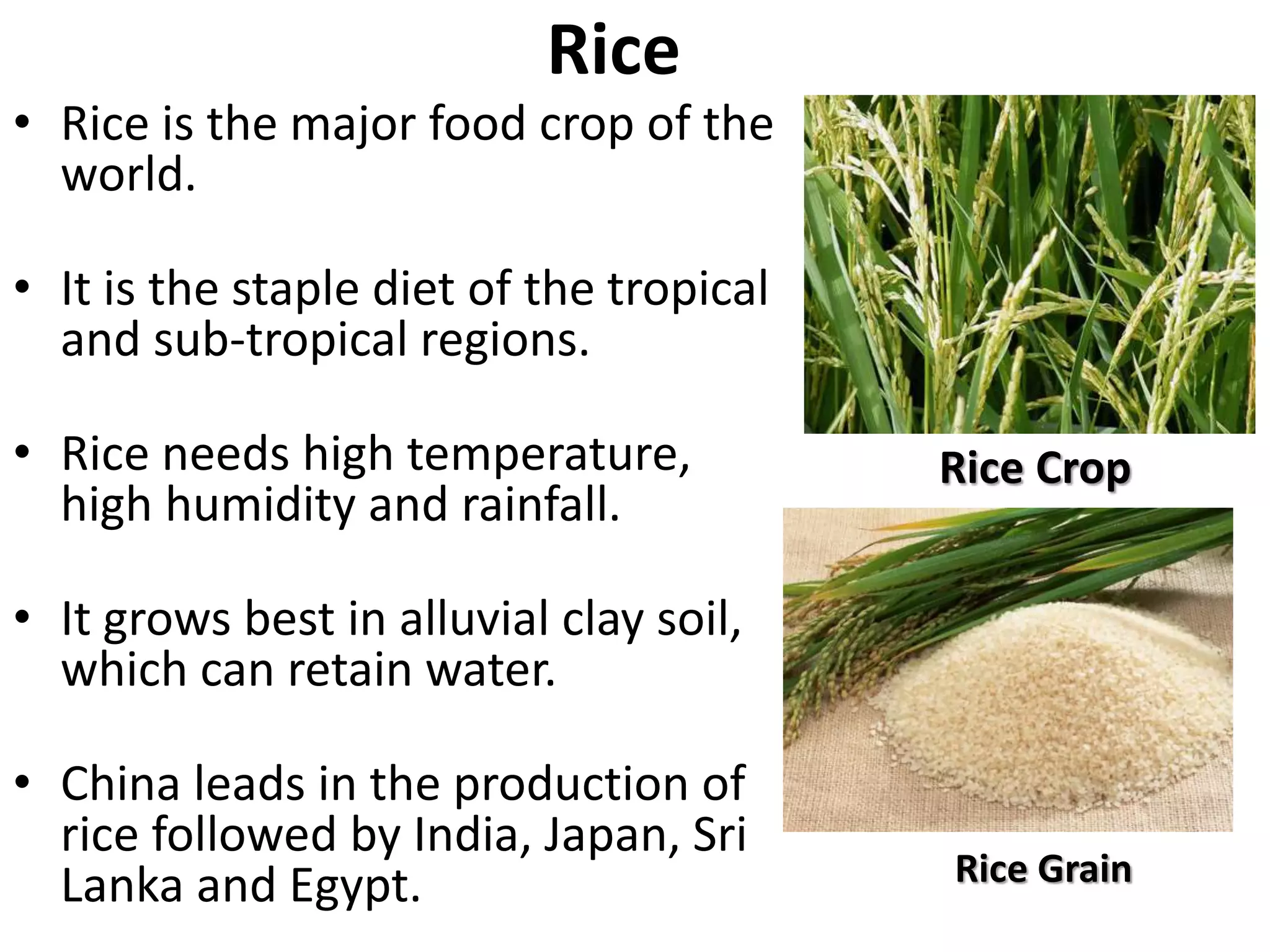
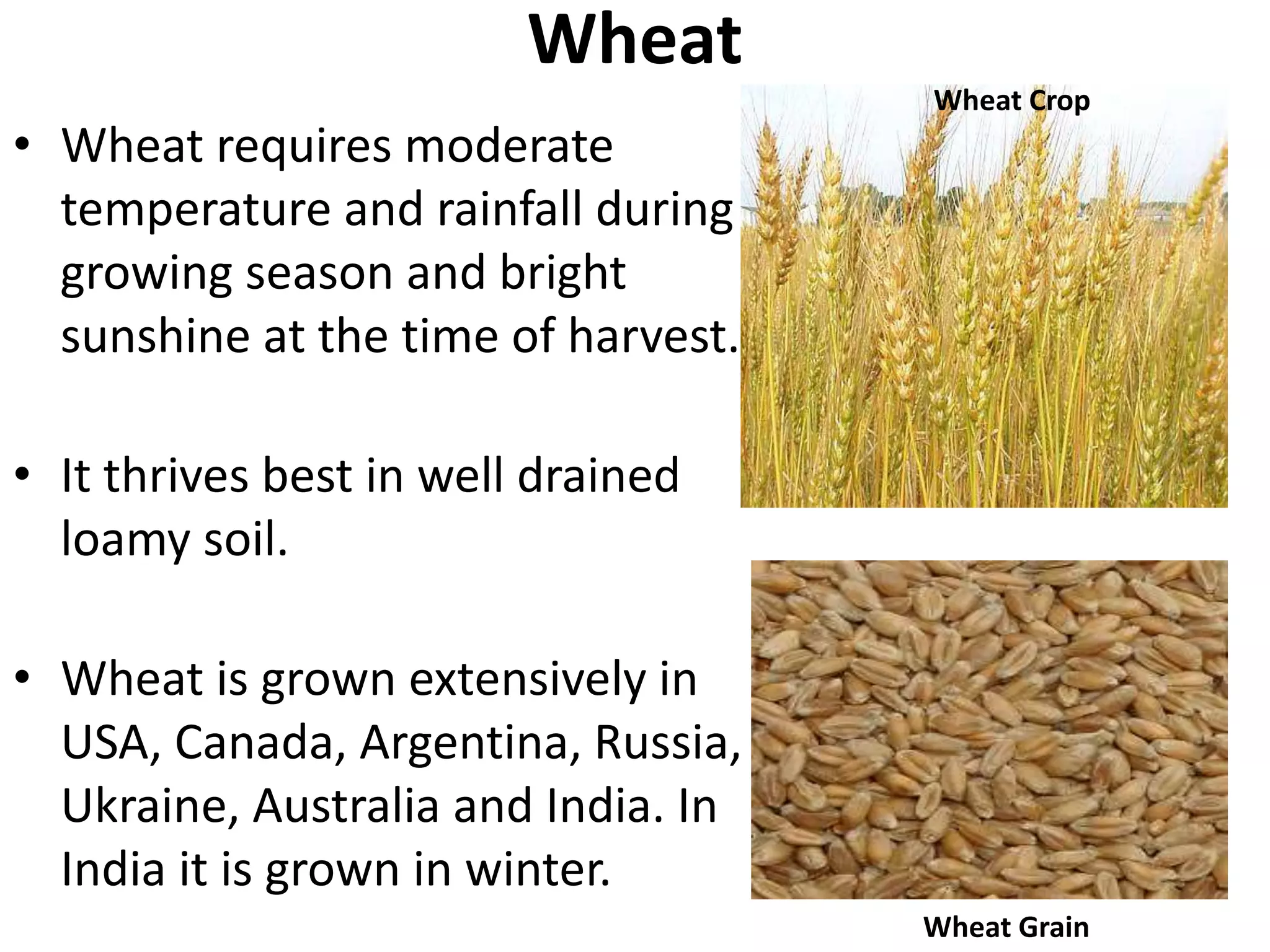
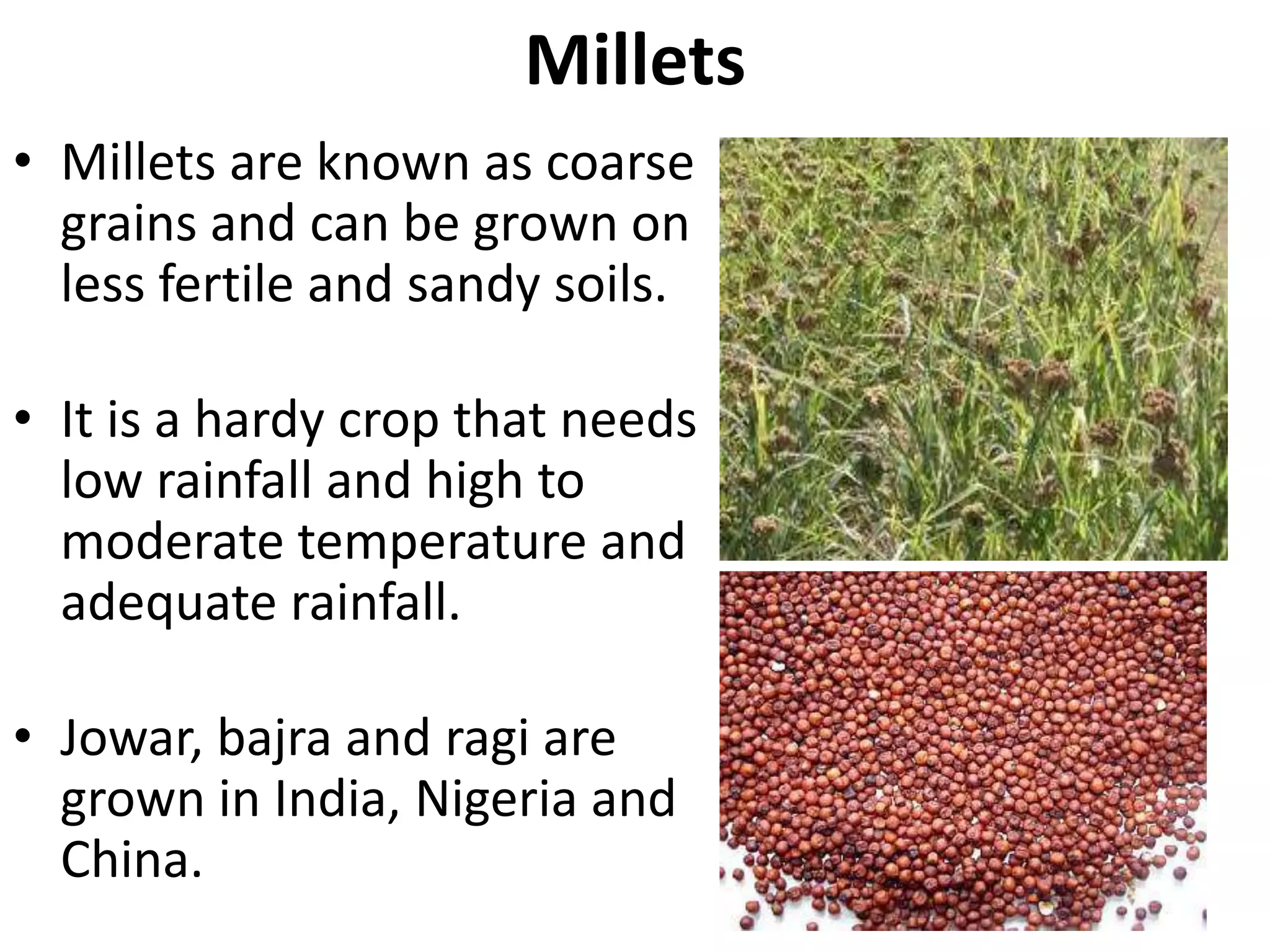

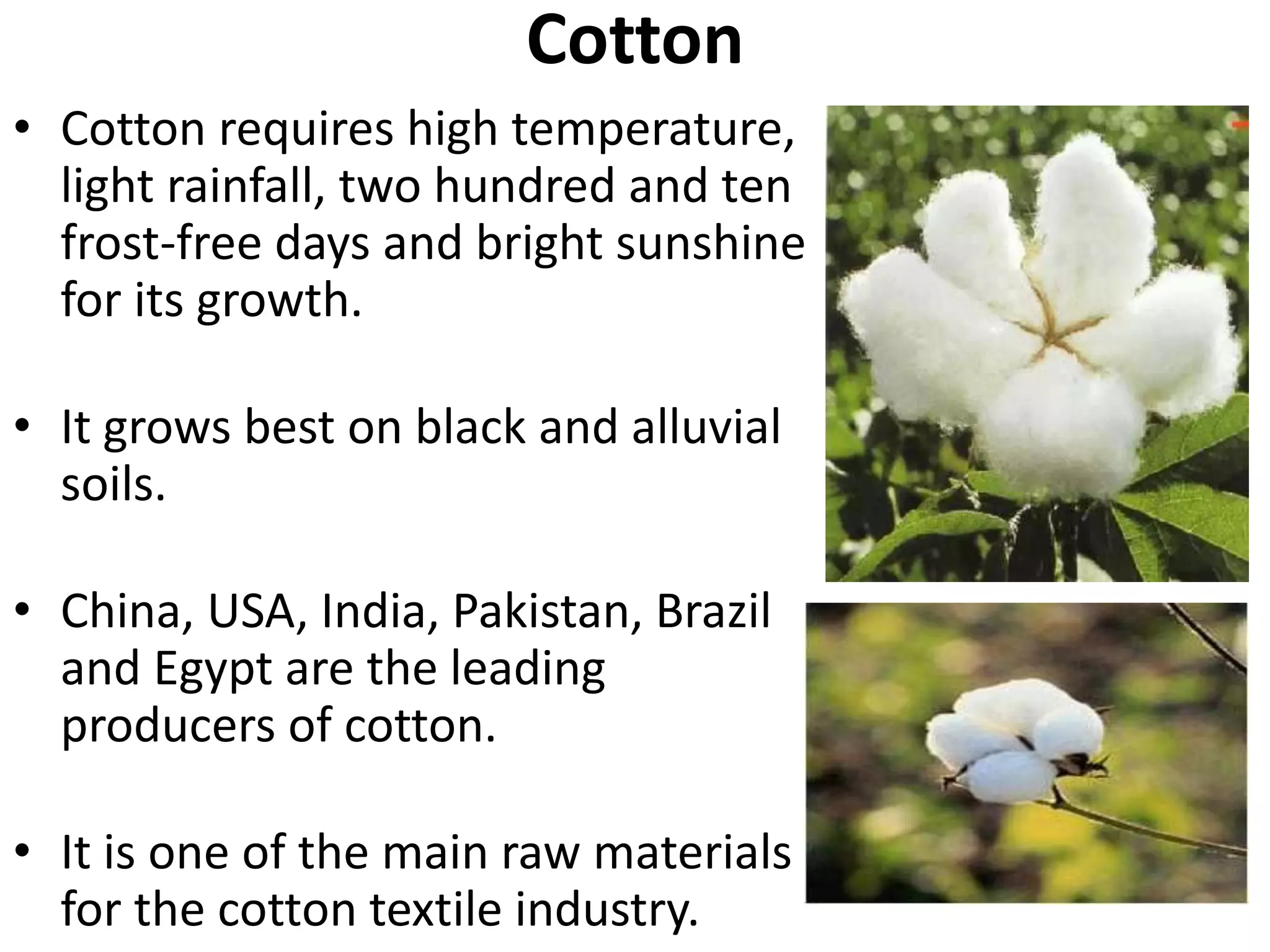
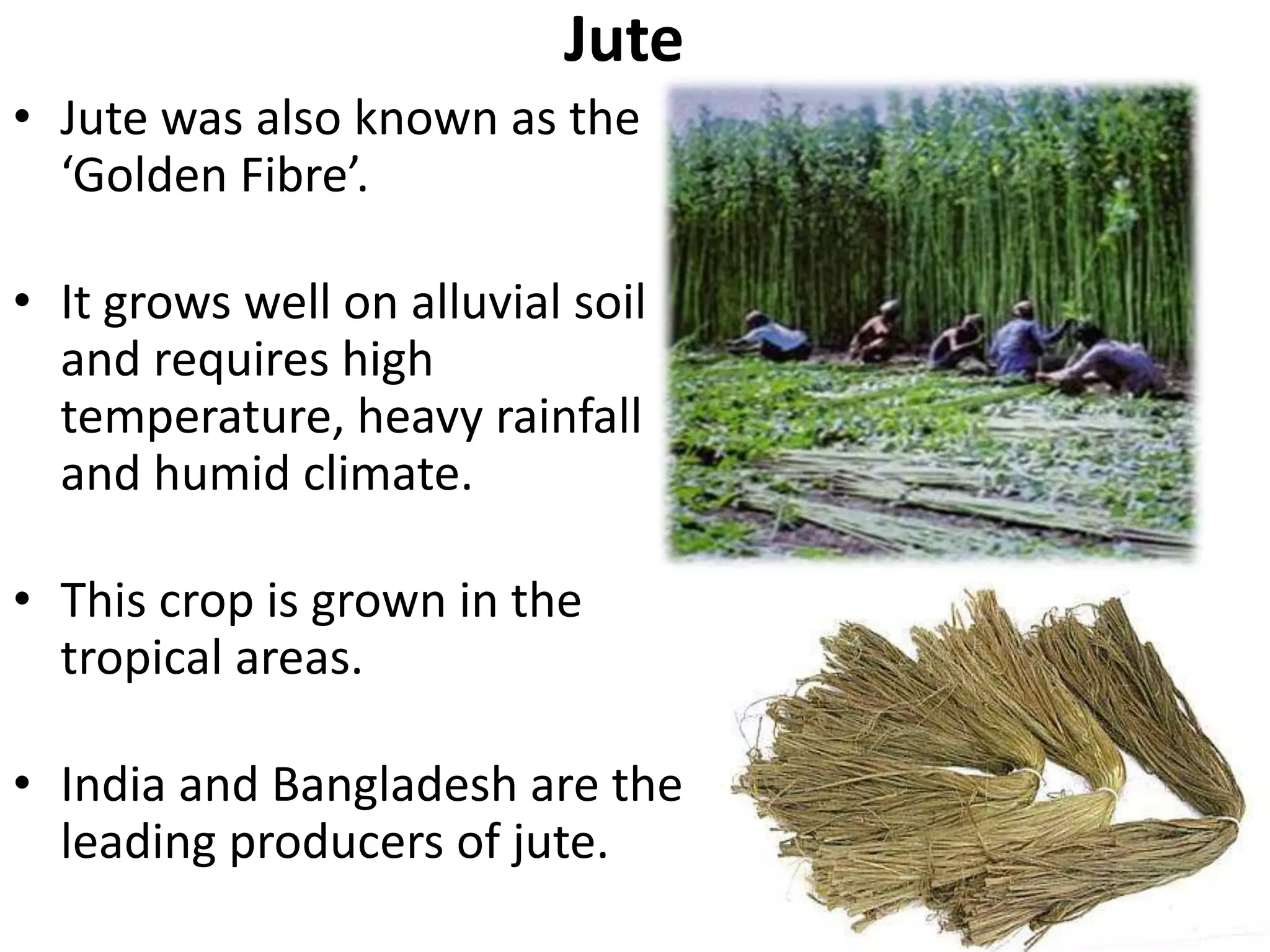


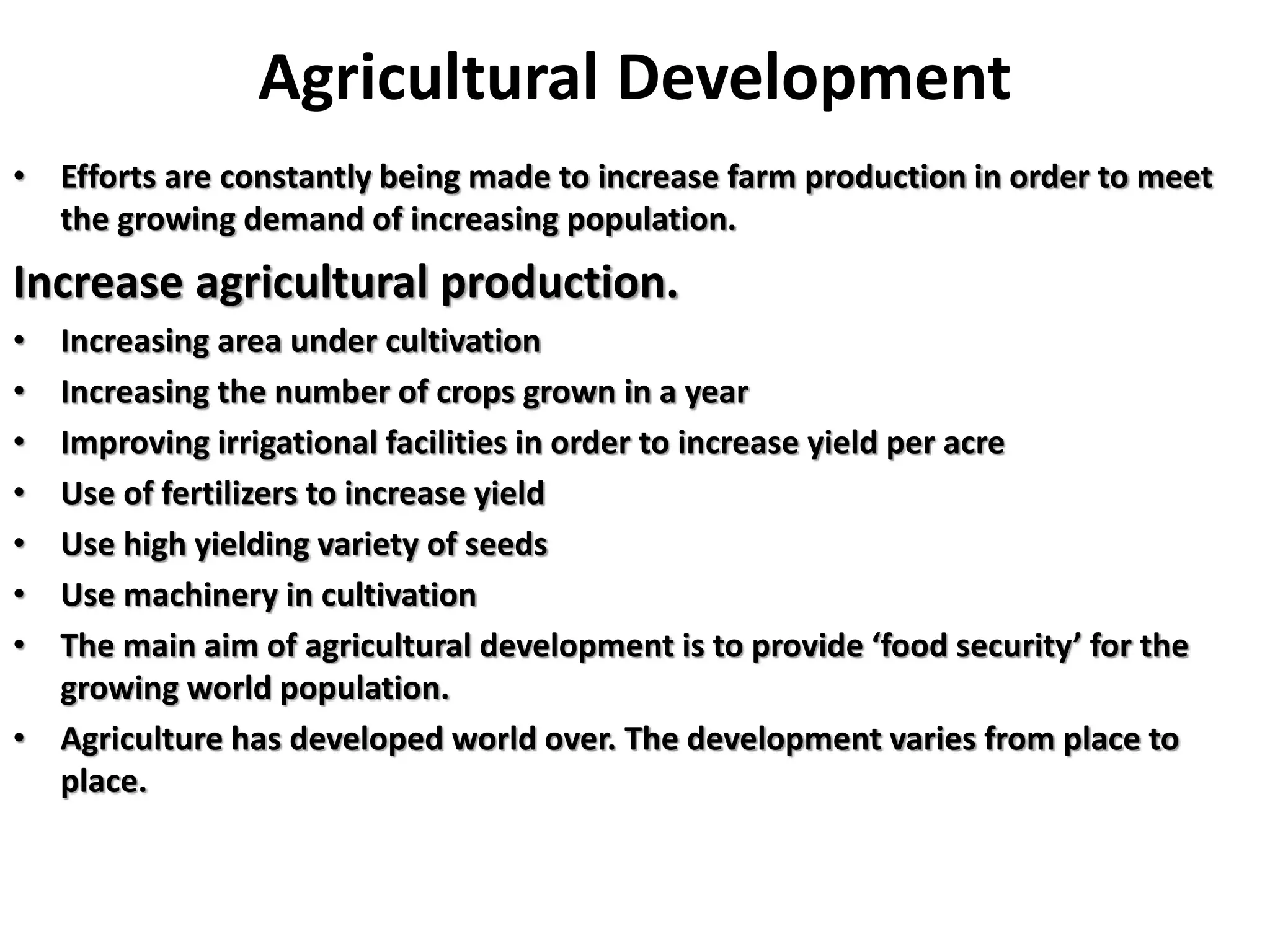
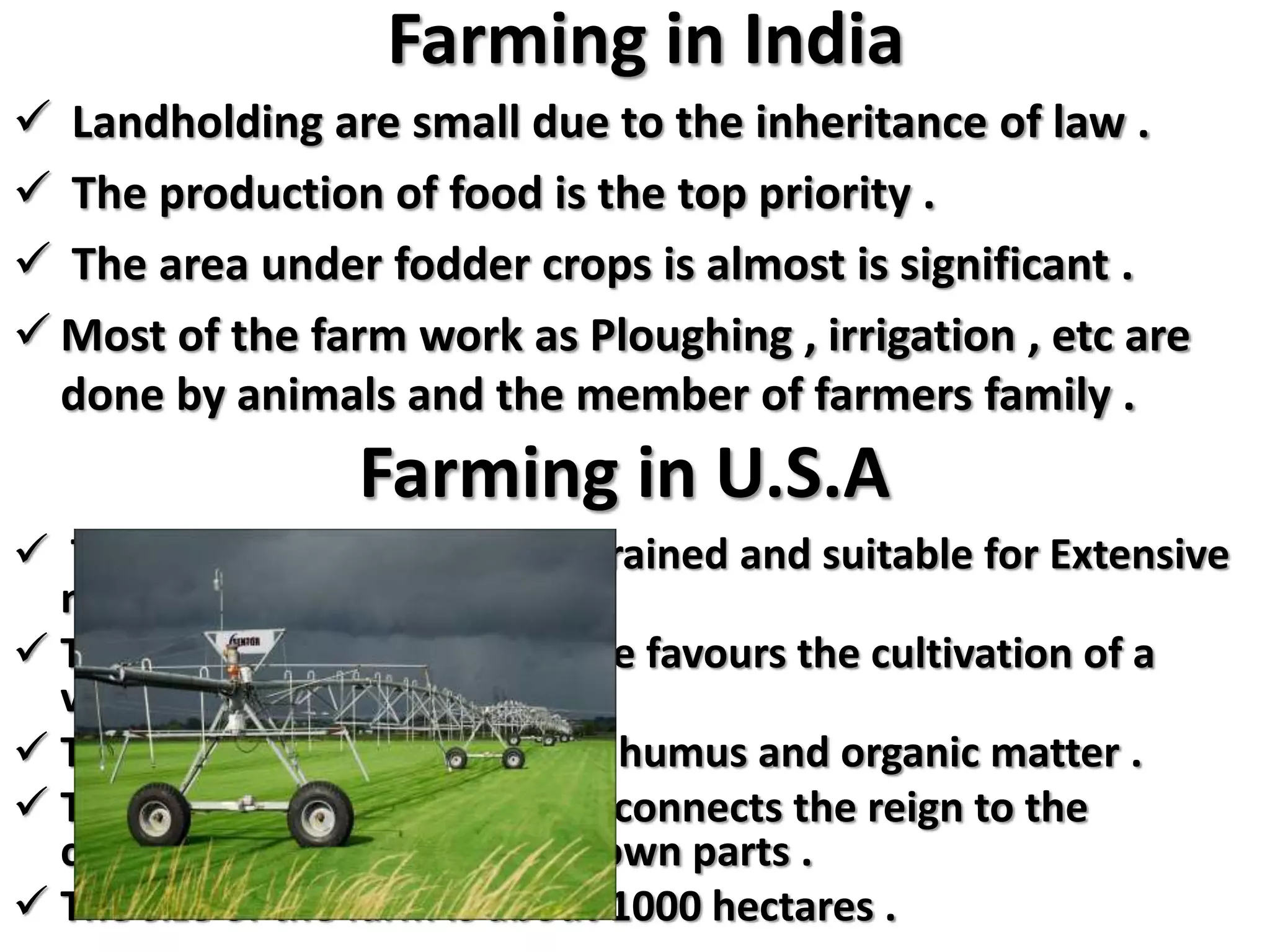
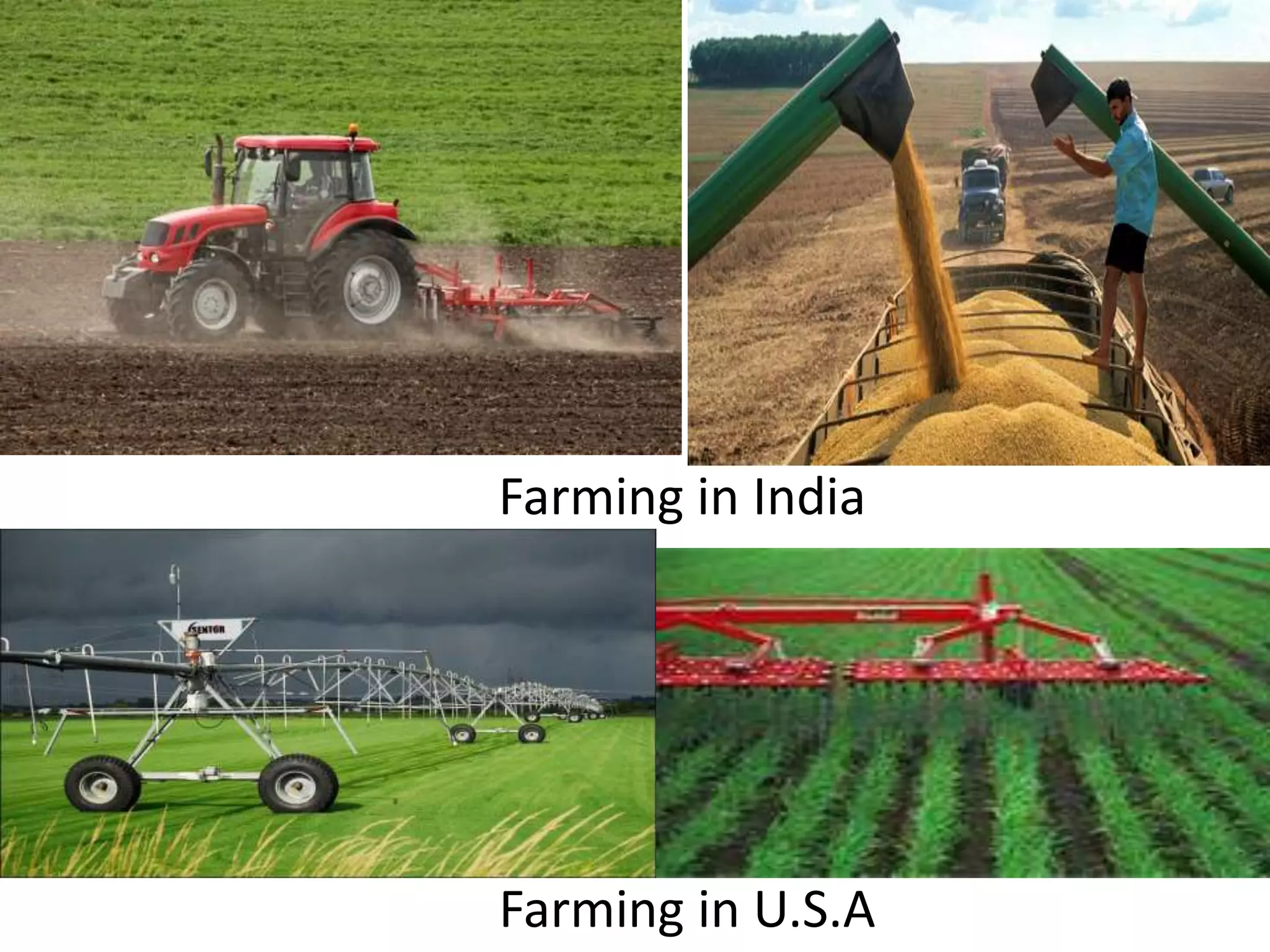
![Dairy farming
• Dairy farming is a class of agriculture for long-term
production of milk, which is processed (either on
the farm or at a dairy plant, either of which may be
called a dairy) for eventual sale of a dairy product.
• Although any mammal can produce milk, commercial
dairy farms are typically one-species enterprises. In
developed countries, dairy farms typically consist of
high producingdairy cows.
• Other species used in commercial dairy farming
include goats, sheep, and camels.
• In Italy, donkey dairies are growing in popularity to
produce an alternative milk source for human infants.[1]](https://image.slidesharecdn.com/agriculture8th-160913090114/75/Agriculture-geography-class-8th-39-2048.jpg)
